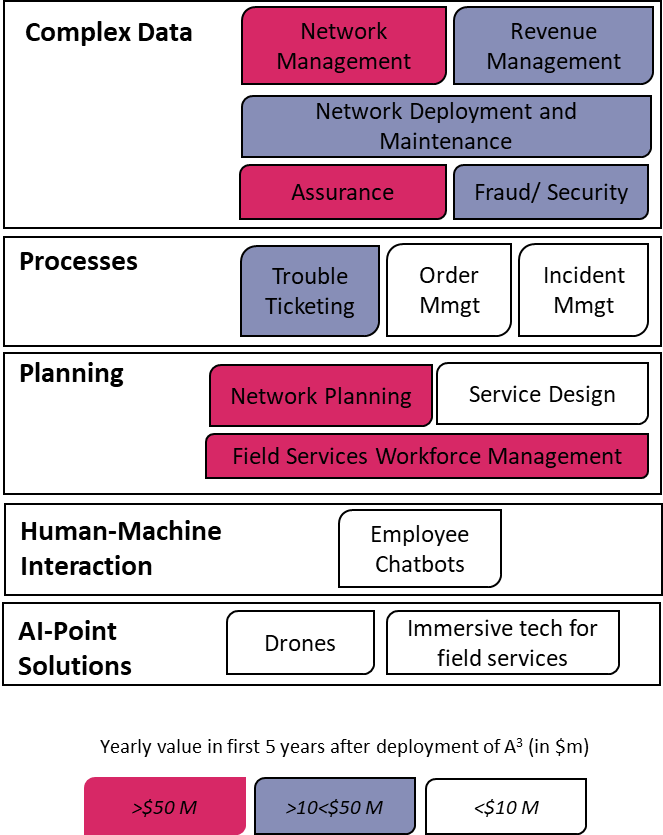Gaining Solid Financial Value from Analytics, AI and Automation
CSPs are not yet taking full advantage of the benefits of projects that can lower costs while improving productivity.
The telecommunications industry is not immune from the security breaches that make the news on a regular basis. Multiple databases and repositories store sensitive customer and network data, and while that information is critical to operators for generating tailored services and crafting a better customer experience, it’s also highly coveted by more nefarious entities.
Much has been written about the opportunity for analytics, AI and automation to reduce costs and boost telco revenues. When considering the total financial opportunity of these new technologies, around 65% of the potential value will come from projects in the network, OSS and BSS functions, while nearly half of that will come from the deployment of SDN/NFV where the financial value to the telco is intrinsically linked to the use of machine learning to manage the new levels of complexity. It is estimated that a handful of the most advanced operators have achieved one-third of this total potential value.
Projects that offer the most immediate benefit:
- Reduce OPEX spend on the network (e.g. power, base station rental, upgrades)
- Reduce CAPEX spend by optimizing the deployment of the network or enabling the reuse of equipment
- Increase productivity or replace headcount in large teams (e.g. field services, NOC)
Projects that have less value either bring benefits only to smaller teams (network planning teams or those involved in service design) or have activities within them that require sophisticated algorithms to be developed due to difficult problems.
The rows of the following diagram show five different types of analytics, AI and automation projects within the network, OSS and BSS. The color coding demonstrates high, medium or low value from projects of each type.

Complex Data
In the network management box, analytics and machine learning are used to understand large, mostly structured data sets, providing a new understanding of the network, finding previously unknown problems, diagnosing complex underlying issues and prescribing resolutions. In assurance, existing systems are moved from mainly descriptive analytics towards trialing small automations. Full self-healing networks remain some time away because of their need for multidomain service orchestration.
Processes
Robotic Process Automation (RPA) and the beginnings of more “intelligent” automation enable better decision making, orchestration and task completion within telco processes. RPA-based automation has been seen in order handling, trouble ticketing and the service desk for the last few years. However, machine learning has now been deployed within use cases such as automated troubleshooting on the technical service desk where it automatically processes data from multiple sources and diagnoses issues.
Planning
Analytics and machine learning will increasingly be used to solve a range of forecasting and optimization problems. However, bespoke algorithms are currently needed for individual problems, and the business case for creating algorithms for every problem—or to enable full automation—may well not be viable.
Human-machine Interactions
AI solutions such as natural language processing and text analytics are used to understand human intent or sentiment, such as with operational chat bots providing information to employees from network systems.
AI Point Solutions
This row captures individual AI solutions that have specialized uses within a telco. In this part of the organization, drones inspect equipment on cell towers, both for routine maintenance and emergency scenarios. Also, immersive technology enables field service teams to see instructions and remote experts to see what the technician is viewing so that they can provide help in real time.
Finding the Best Investments
When calculating the financial benefits of analytics, AI and automation for telcos, it becomes clear that certain types of use cases offer good “problems” for these technologies to solve. For example, a use case that has large datasets that change rapidly may benefit from machine learning in place of existing rule-based analytics. However, the fact that the use case provides a good problem does not automatically mean good return on investment, so consider the realistic potential for increased revenue or decreased headcount and investment before embarking.